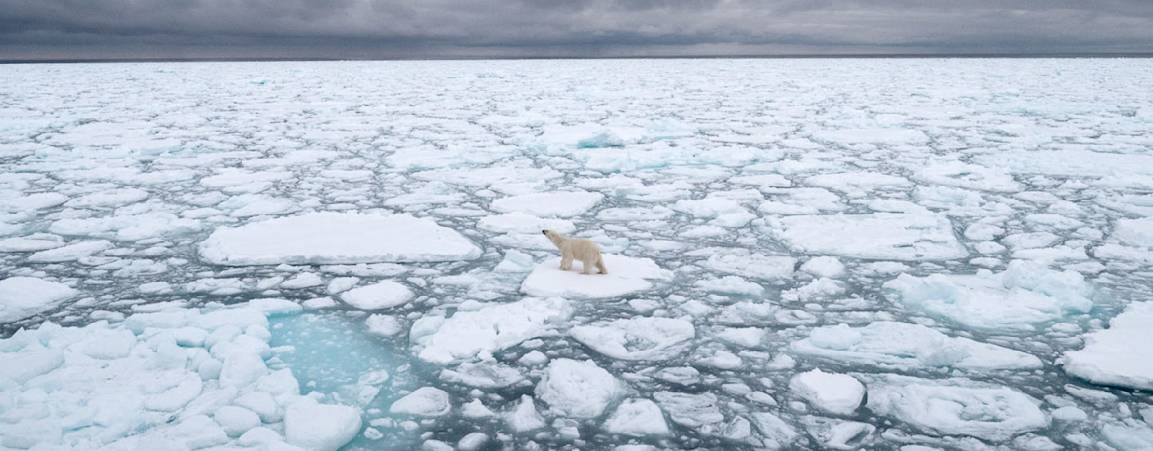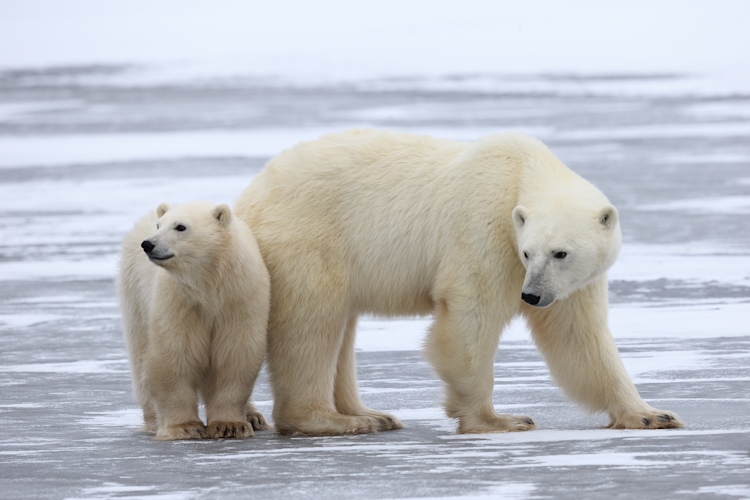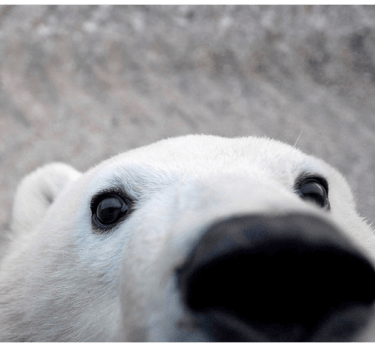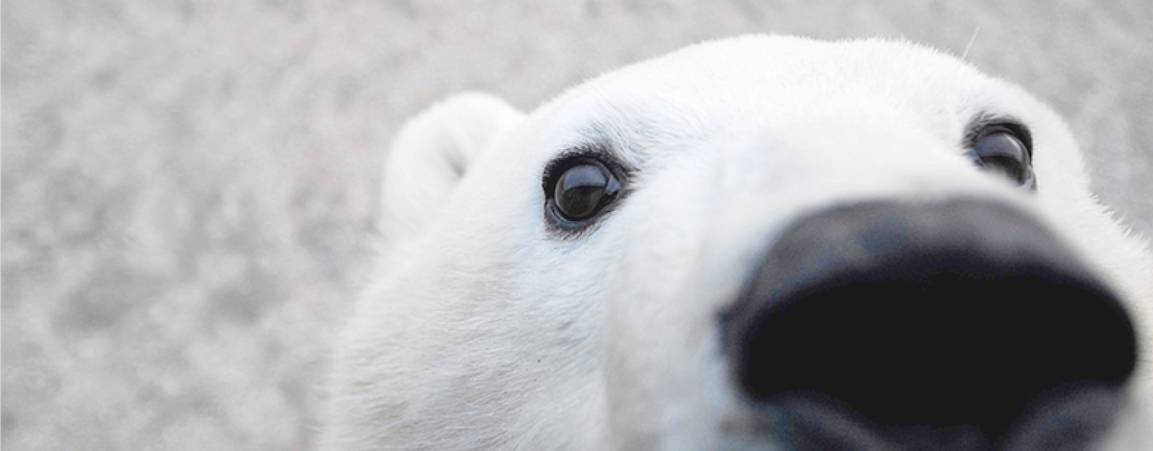
Welcome PBI Climate Alliance 2025!
Please join us on a journey to the Arctic with two amazing polar bears named Ursula and Violet. Your mini-course will go into further depth on many points introduced in these videos.
Polar Bears International is the only conservation organization solely focused on wild polar bears. However, we champion polar bears wherever they are and we recognize the key role that zoos and aquariums play in the ongoing research and conservation efforts at Polar Bears International, and in the polar bear community at large. Advancements in polar bear care are continually progressing and enriched captive environments can play a central role in global conservation efforts.
In addition to discussing what it means to be an Arctic Ambassador Center and one’s individual role in working within his/her Arctic Ambassador Center team, this program includes a grounding in climate science, an understanding of the status of Arctic sea ice and polar bears, and strategies to affect change at the community level.
Collaboratively, we will work with like-minded organizations, subject matter experts, and local knowledge holders to build capacity and achieve the goals of this program. Through the Alliance, we train and empower individuals to find their own role, to recognize their unique strengths, and encourage them to join a community of others that share their concerns and who also affect change.
Participants will engage in online learning experiences, attend an in-person summit in the self-proclaimed polar bear capital of the world - Churchill, Manitoba, Canada - and stay connected over time with fellow ambassadors and alumni through online gatherings and social media tools.
Specific to this cohort, the 2025 program will:
Develop a thorough understanding of polar bear natural history, climate science as it pertains to Arctic sea ice, effective climate communications, and key issues related to Northern communities
Discuss the appropriate opportunities to talk about climate change with communities
Understand the population management strategies in place within AZA and EAZA institutions, zoo-based conservation science efforts, and the opportunities that exist to participate.
Receive an introduction to the National Network for Ocean and Climate Change Interpretation (NNOCCI)’s science-based Strategic Framing climate change communication tools in an effort to streamline the institutional narrative surrounding polar bears, climate change, and solutions, and to empower conservation action
Work with experienced community change agents and NNOCCI framers through the PBI Arctic Ambassador Center and NNOCCI networks
Build relationships with like-minded conservation professionals to increase knowledge sharing, problem solving, and collaboration opportunities
Use knowledge and skills gained from the course to create an action plan to contribute to individual institutions and the broader PBI alumni network
Learn about the power of community-level actions, how to incorporate these into interactions with the public (and the barriers in doing so), and share ways to collectively measure these impacts.
Build institutional capacity to achieve stronger conservation goals, by fostering a strong sense of community and support that furthers individual and institutional work
Your online training consists of the following modules:
Module One: Polar Bear Natural History
Polar bear life history including; physical characteristics, food sources, reproduction, behavior, and threats. Participants will use the online community Discord for assignments, communication, and collaborative opportunities with fellow participants.
Module Two: Climate Change and Sea Ice
The physics of our changing climate, including up-to-date information on Arctic sea ice.
A virtual connection with our Chief Climate Scientist, Dr. Flavio Lehner.
Module Three: Polar Bears in a Warming World
The importance of the relationship between polar bears and sea ice, including how polar bears are impacted by Arctic sea ice loss.
Module Four: Working with your AAC Team
An overview of how captive polar bears contribute to important conservation science efforts, including current priorities as identified by AZA's Polar Bear Program, the Polar Bear Research Council (PBRC), EAZA Bear TAG and Polar Bear EEP, and PBI’s Scientific Advisors.
Module Five: Affecting Change and Civic Engagement
Policy changes—changes to systems—are needed to save sea ice for polar bears and get our climate back to functioning the way it should. We must move away from an energy system of the past, one that comes from burning fossil fuels, to a system that gets energy from the sun, wind, and water. Let's talk about how we can all use our own strengths to plug into a community that shares our concern and help move the needle.
Advocacy—you will get an overview on how PBI participates in advocacy and policy. Whether you work in animal care, education, conservation, communications or guest services, there are meaningful ways to contribute to your organization’s advocacy work. We’ll start to think about what it means to innovate in conservation storytelling and advocacy efforts to move the needle on polar bear conservation.
Module Six: Strategically Framing Climate Communications with NNOCCI
After completing this six-week NNOCCI Strategically Framing Climate Communications module, participants will be better able to:
Explore social science data from reputable sources about climate change communication principles and best practices. Understand the theory and social science research behind NNOCCI's framing techniques for climate change communication.
Understand and utilize available tools to support NNOCCI framing practice in professional settings (i.e. interactions with guests, online conversations, blogs, signage, social media, etc.)
Photo: BJ Kirschhoffer / Polar Bears International

About Us
Polar Bears International
Polar Bears International is the only organization dedicated solely to wild polar bears. We know polar bears – their habitat, their ecology, their threats – and are recognized leaders in their conservation. Our mission is to conserve polar bears and the Arctic sea ice they depend on. Through media, science, and advocacy, we work to inspire people to care about the Arctic, the threats to its future, and the connection between this remote region and our global climate. Since 1992, PBI has worked to sustain a future for polar bears across the Arctic. Leading polar bear scientists guide our research efforts and inform our policy decisions.
Our field base in Churchill provides a platform for applied research, outreach and education, and global broadcasts from a remote area on the front lines of climate change. Churchill will always be our home - Polar Bears International was born on a Tundra Buggy - but we were so thrilled in 2023 to expand our interpretive presence to a pop up center - Polar Bears International Ice House - in Svalbard, Norway, during Arctic cruise seasons. There we have the unique opportunity to continue to share the polar bear story, as well as shed light on one of the most vulnerable times of a polar bear’s life cycle (mums and cubs) and our maternal den monitoring program.
We encourage you to watch the "Polar Bears International – About Us" video below and discuss with your team whether you might find it useful in your AAC interpretive space! AND you can find additional videos AACs have used in their interpretive spaces here as well (also in your AAC Toolbox).
We have versions of this video with translated subtitles available. Click here for French subtitles. Click here for German subtitles.
Media Highlights
As we build upon last year’s cohort with a focus on communication, media, and advocacy, we have gathered some of our own media highlights to share with you and we hope you will share them with your communications teams
Check out our Press Center for some of our most recent media highlights, and you are welcome to check out a review of our 2024 earned media.
Below, you can watch a video of our other work in 2024.

Photo: Tim Auer / Polar Bears International
Next
Visit the Mini-Course Overview for more details on the structure of this course.










